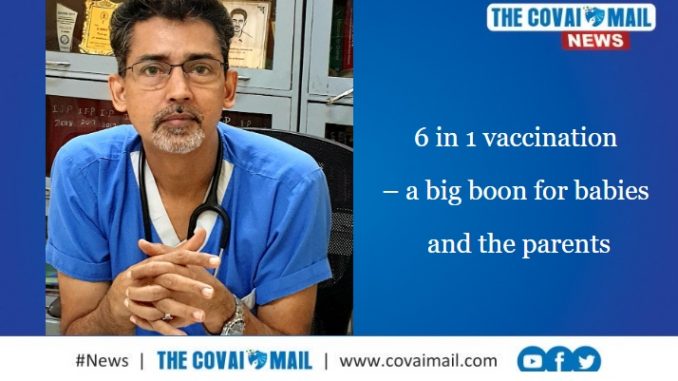
Immunization coverage in Tamil Nadu must increase from 89.2% to 90%, more focused in urban areas.

Children are exposed to innumerable germs, some of which are deadly. A child’s immune system in development is unable to fight. The World Health Organization says immunization is one of the most successful public health interventions to prevent deaths from infections.
The 6 in 1 combination vaccination protects children from 6 diseases: diphtheria, pertussis, tetanus, haemophilus influenzae type B, hepatitis B, and poliomyelitis.
Dr.D.Ashwath,DCH,MD,DNB, says, “Combination vaccination, a boon, saves time and resources, reducing your visits to the doctor’s clinic and the pain of multiple injections. Moreover, the different antigens cooperate with each other to enhance more robust immunity in a child.”
Indian Academy of Pediatrics informs that children need the DTP-IPV-Hib-HepB vaccines at the age of 6, 10 and 14 weeks. The 6-in-1 vaccination provides protection from the 6 diseases. This vaccination means, children take only 2 injections (i.e., 6 in 1 vaccination and pneumococcal vaccination) and 1 oral vaccine (rotavirus vaccination) on each occasion.
India’s untiring efforts to increase immunization coverage has resulted in significant improvement (see: the National Family Health Survey – NFHS-5). The percentage of children (aged 12 to 23 months) fully vaccinated* has increased from 62% (NFHS-4; 2015-16) to 76.4% (NFHS-5; 2019-21) in India and from 69.7% to 89.2% in Tamil Nadu. A recent study reveals there has been a marked improvement in immunization coverage in rural areas, but not in urban areas.
More needs to be done to make parents aware of the benefits of immunization and the availability of vaccines, to increase full immunization coverage to 90% and beyond. People should understand children receive fewer shots but get the same level of protection as they would have with separate vaccines.
